Ancient Canals the Old Is New Again
People have been edifice canals since the earliest civilizations were formed in Mesopotamia. These early on canals were used for irrigation and over time people started building larger canals to use for transportation. While these ancient canals no longer exist, the canals on this list have been in operation hundreds of years. Some of these canals still used to transport appurtenances, while others are at present only tourist attractions or historical sites.
Every bit of July 2020, the information on this listing is as authentic as possible and volition be updated as needed.
x. Suez Canal
Years Built: 1859 – 1869
Location: Isthmus of Suez, Egypt
Length: 120.1 miles (193.3 km)
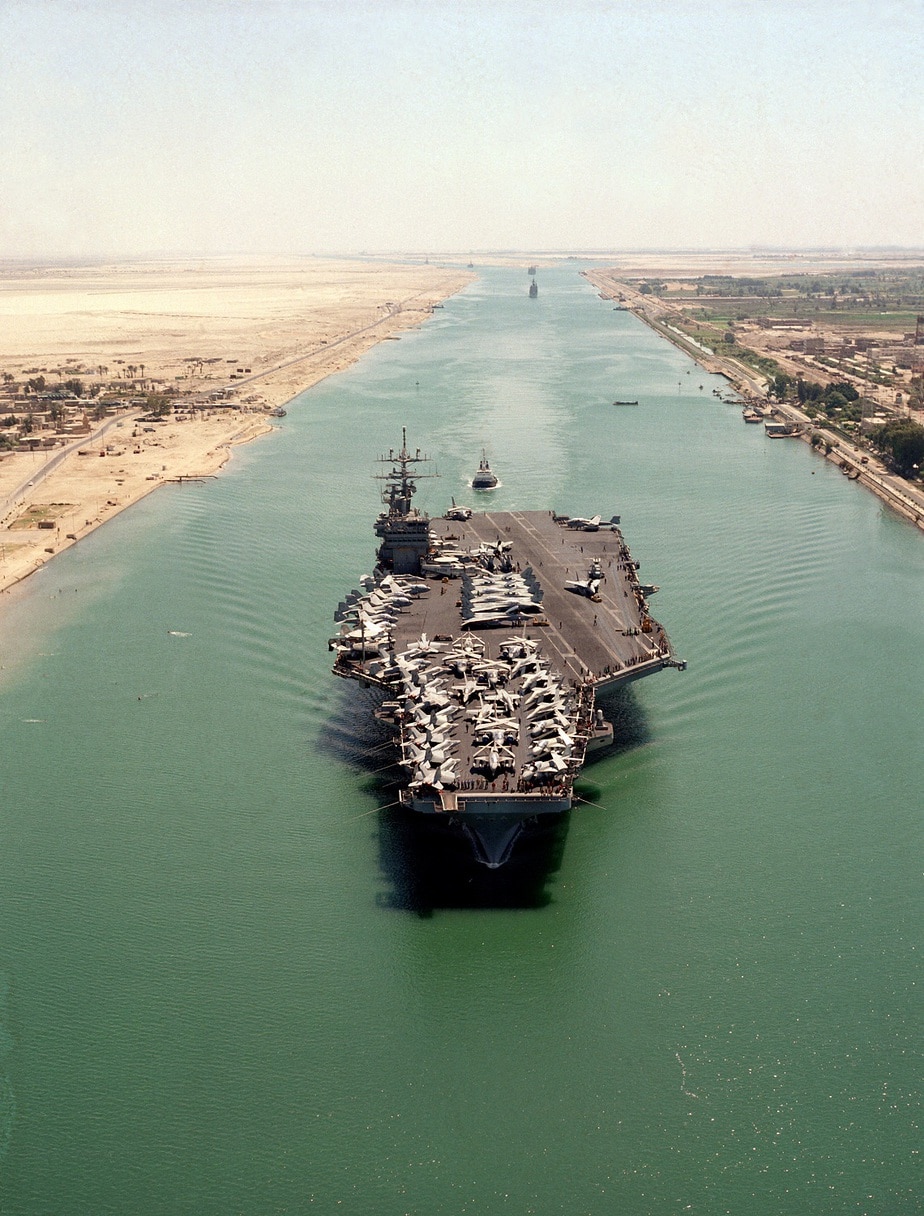 photo source: Wikimedia Eatables
photo source: Wikimedia Eatables
Built in the mid-19th century, the Suez Canal is notwithstanding one of the most important waterways in the earth. The Suez Culvert actually traces its origins back to Aboriginal Egypt and it was the outset canal to straight link the Mediterranean Sea to the Red Ocean. The culvert was rebuilt several times before the modern permanent canal was constructed.
The Suez Canal is important considering it enables a more than directly route for shipping between Europe and Asia, effectively assuasive for passage from the North Atlantic to the Indian Ocean without having to circumnavigate the African continent. Unfortunately, equally such a vital road for international trade, control of the Suez Canal has been fought over since it opened in 1869.
Did Yous Know?
French sculptor Frédéric-Auguste Bartholdi, who sculpted the Statue of Liberty, originally tried to build his sculpture chosen "Arab republic of egypt Bringing Light to Asia" at the Mediterranean entrance of the Suez Canal.
9. Caledonian Canal
Years Built: 1803 – 1822
Location: Inverness to Corpach, Scotland
Length: 60 miles (97 km)
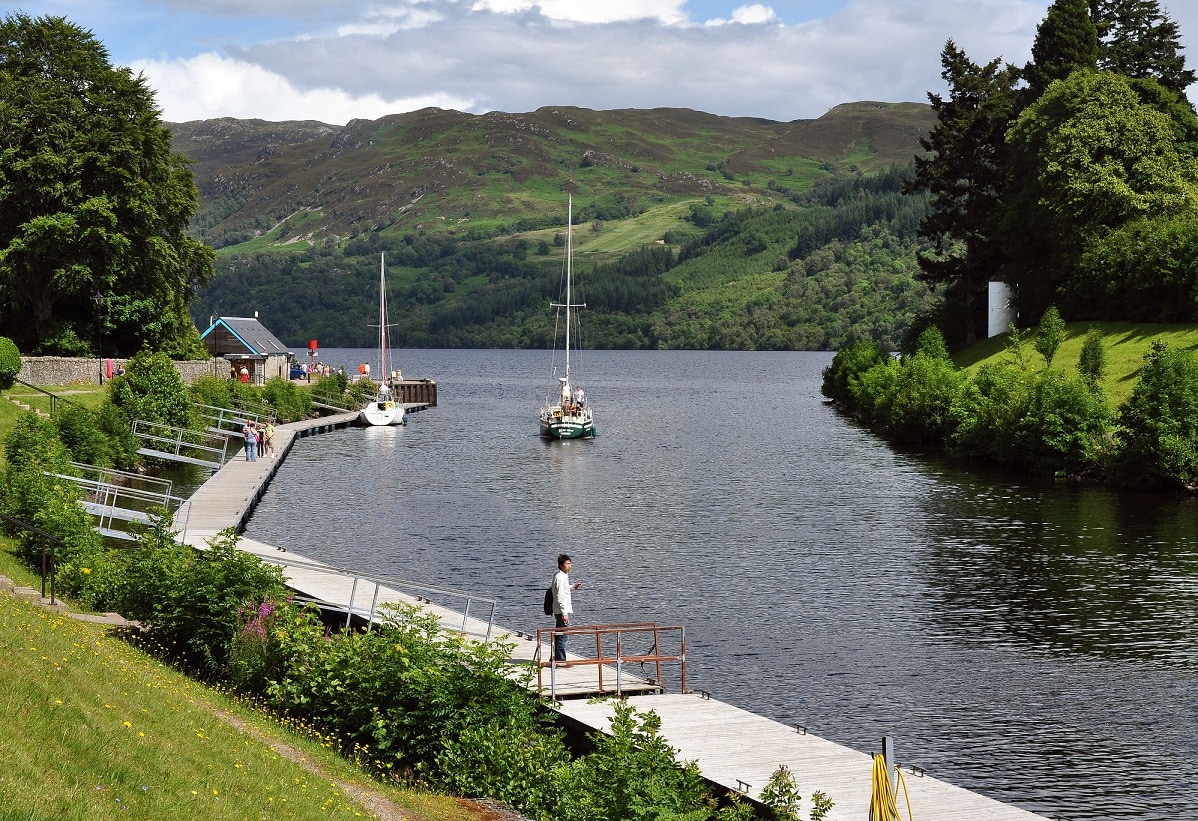 photo source: Wikimedia Commons
photo source: Wikimedia Commons
The Caledonian Culvert is ane of the oldest existing canals in Scotland and dates dorsum to the early 19th century. The canal was started in 1803 to plans produced by Thomas Telford following survey work past James Watt thirty years earlier. Structure of the Caledonian Canal was plagued by many problems and information technology took 17 years – 12 more than originally planned – to complete. Commercially, the Caledonian Culvert was not initially a success, but it rapidly became a popular tourist attraction. Today, the Caledonian Canal is a Scheduled Ancient Monument and attracts half a million visitors each yr.
Did Yous Know?
Queen Victoria's trip along the Caledonian Canal in 1873 helped to popularize the canal and increased visitors to the surface area.
eight. Bridgewater Canal
Years Built: 1759 – 1761
Location: Due north West England
Length: 41 miles (66 km)
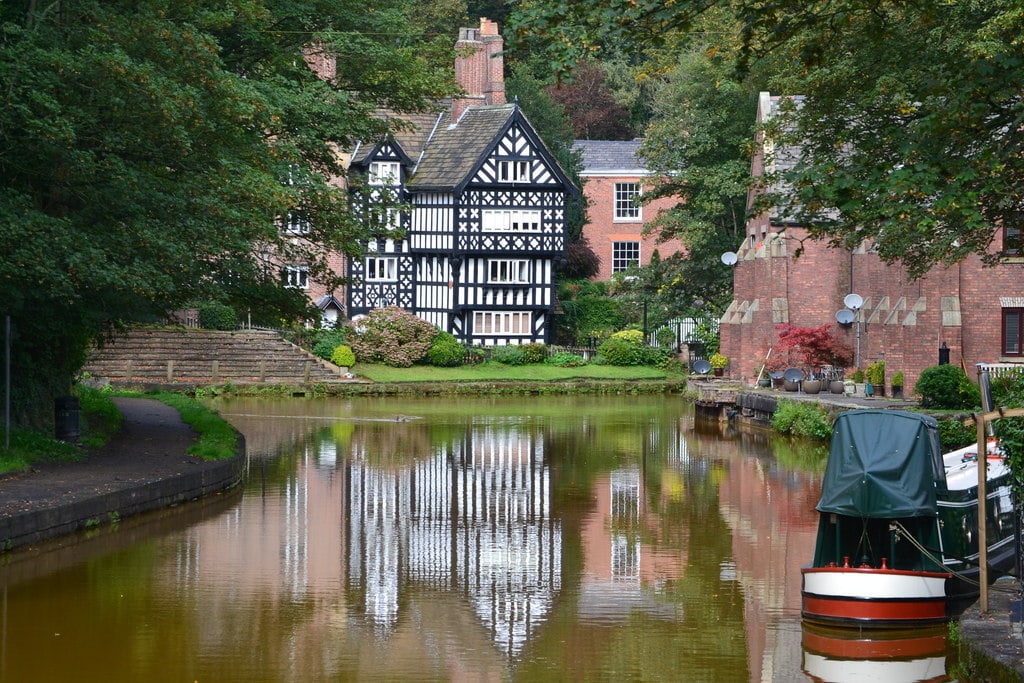 photograph source: geograph.org.uk
photograph source: geograph.org.uk
The Bridgewater Canal is often considered the showtime true canal ever built in England. The canal was commissioned past (and named for) Francis Egerton, 3rd Duke of Bridgewater, to send coal from his mines in Worsley to Manchester. Bridgewater Canal was the beginning culvert in country to be built without following an existing waterway and served every bit the template for later canals. Similar near of the other canals on this list, the Bridgewater Culvert no longer serves equally a route for transporting goods, but is mostly only used for recreation. Although Bridewater Canal is important to British history, it is one of the few canals that has not been nationalized and is withal privately endemic.
Did You Know?
The success of the Bridgewater Canal'southward structure sparked a catamenia of intense canal building in Great britain, called Canal Mania.
7. Canal du Midi
Years Congenital: 1667 – 1681
Location: Southern France
Length: 150 miles (240 km)
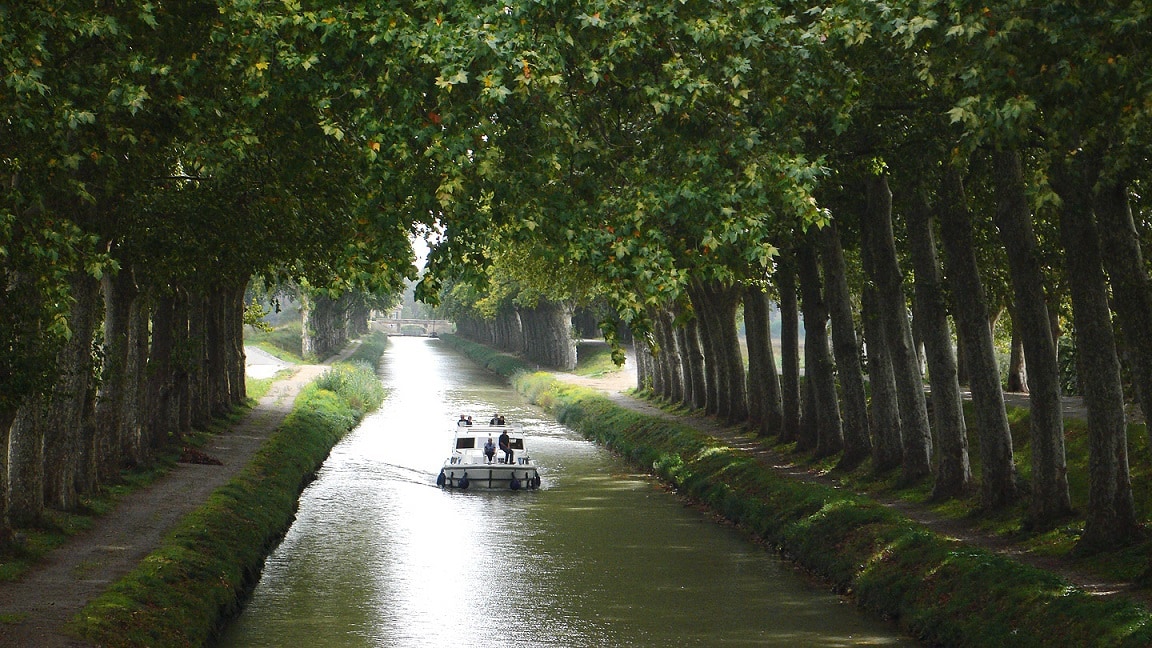 photo source: Wikimedia Commons
photo source: Wikimedia Commons
The Canal du Midi is heralded as one of the greatest feats of engineering science in the 17th century. For several centuries, a canal was proposed between the Atlantic Ocean and the Mediterranean Sea. Diverse leaders, including Augustus, Nero, Charlemagne, François I, Charles IX, and Henry Four dreamt of edifice a culvert in the area and while many projects were started, none of them came to fruition until the Canal du Midi was congenital. While the Canal du Midi is no longer a major transportation road, it is still used for recreation, tourism, and irrigation.
Did You Know?
Information technology took 12,000 laborers fifteen years to build the Culvert du Midi.
half-dozen. Briare Canal
Years Built: 1604 – 1642
Location: Loire and Seine valleys, France
Length: 35 miles (57 km)
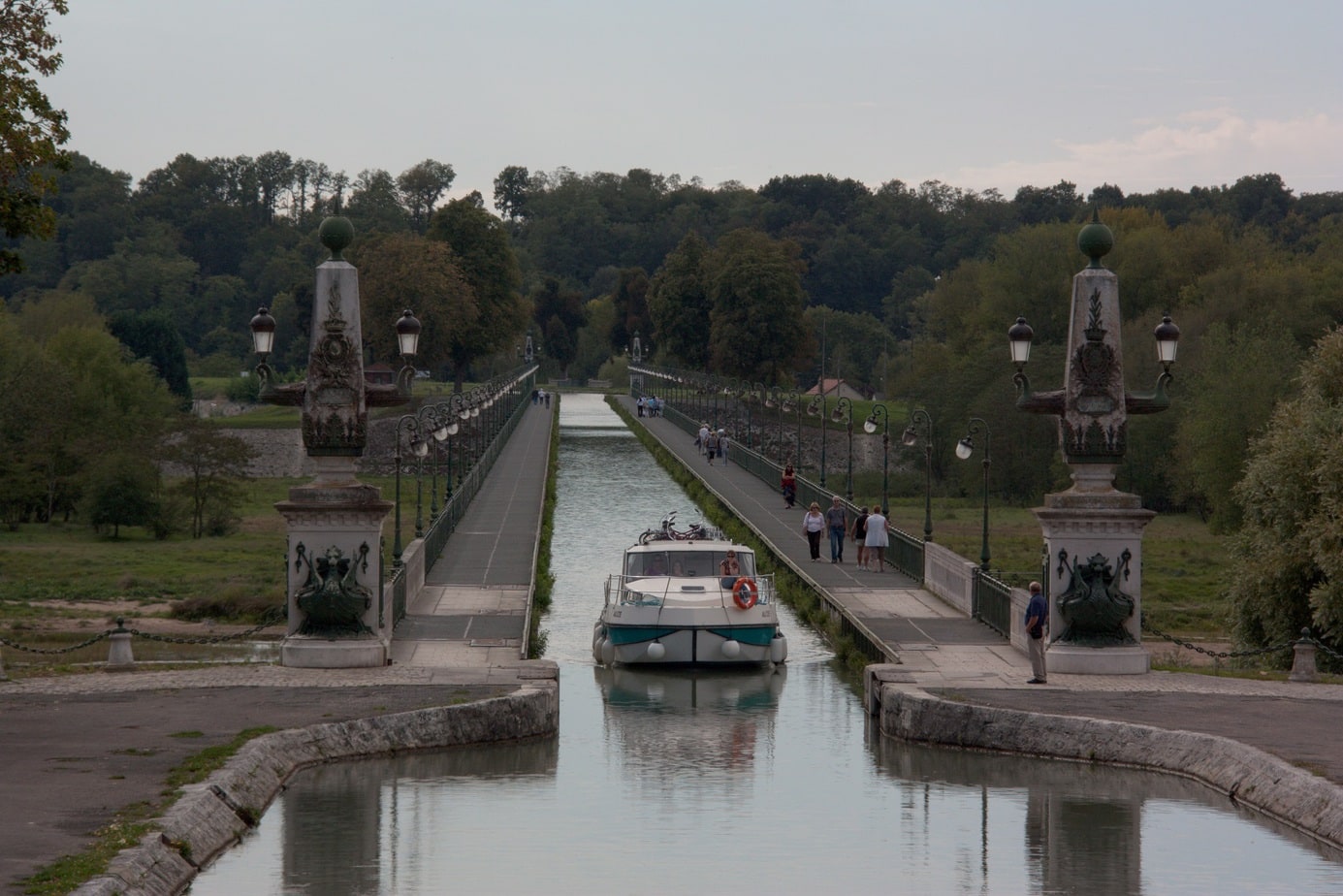 photo source: Wikimedia Commons
photo source: Wikimedia Commons
The Briare Canal is one of the oldest man-made waterways in France and it was the first height-level canal in Europe that was congenital using pound locks. Connecting the Loire and Seine valleys, the Briare Canal was vital in transporting appurtenances to Paris. In the 19th century, the Briare Canal was enlarged and a pumping station was added to pump water into the acme pond. This allowed the Briare Culvert to stay in use during periods of droughts.
Did You Know?
Although many appurtenances were transported along the Briare Culvert, in the 18th century, more 500 vino barges traveled along the canal conveying wines from the Auvergne, Mâcon, Beaujolais, Sancerre, and Languedoc regions.
five. Herengracht, Keizersgracht, and Prinsengracht
Years Built: 17th century
Location: Amsterdam, Netherlands
Length: 1.5 miles (2.4 km) – Herengracht; ane.7 miles (2.viii km) – Keizersgracht; and 2 miles (3.2 km) – Prinsengracht
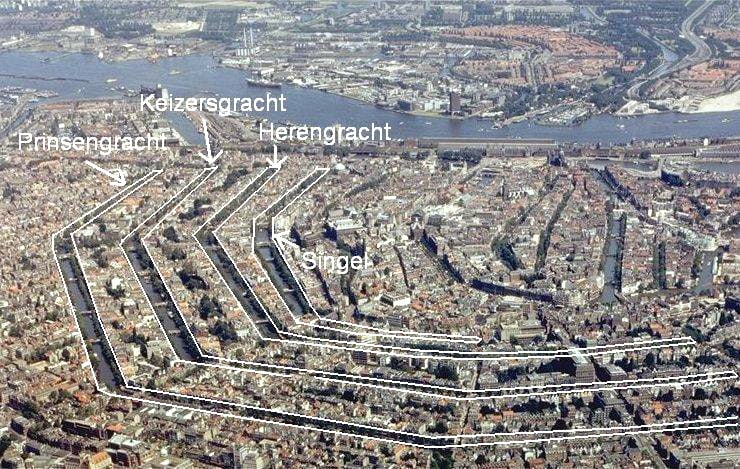 photo source: Wikimedia Commons via Amsterdam Municipal Department for the Preservation and Restoration of Historic Buildings and Sites (bMA)
photo source: Wikimedia Commons via Amsterdam Municipal Department for the Preservation and Restoration of Historic Buildings and Sites (bMA)
While the Singel dates all the fashion back to the 15thursday century, Amsterdam's famous Canal Band (Grachtengordel ) was born during the Dutch Golden Age of the 17th century. Along with the Singel, the main canals of the ring are Herengracht, Keizersgracht, and Prinsengracht. Information technology took over 50 years to build these three canals and the project was completed around 1660. The Canal Ring made Amsterdam four times larger than it was originally and the Culvert Ring is one of the most navigable waterway in the world. In full, the Culvert Ring covers an area of 160 hectares and a full length of 8.7 miles (14 km).
Did You Know?
The Culvert Band is a UNESCO Heritage Site and as well houses over 1,000 other monuments, including the Anne Frank House.
four. Singel
Years Built: 1428 – 1450
Location: Amsterdam, Netherlands
Length: 1 miles (1.6 km)
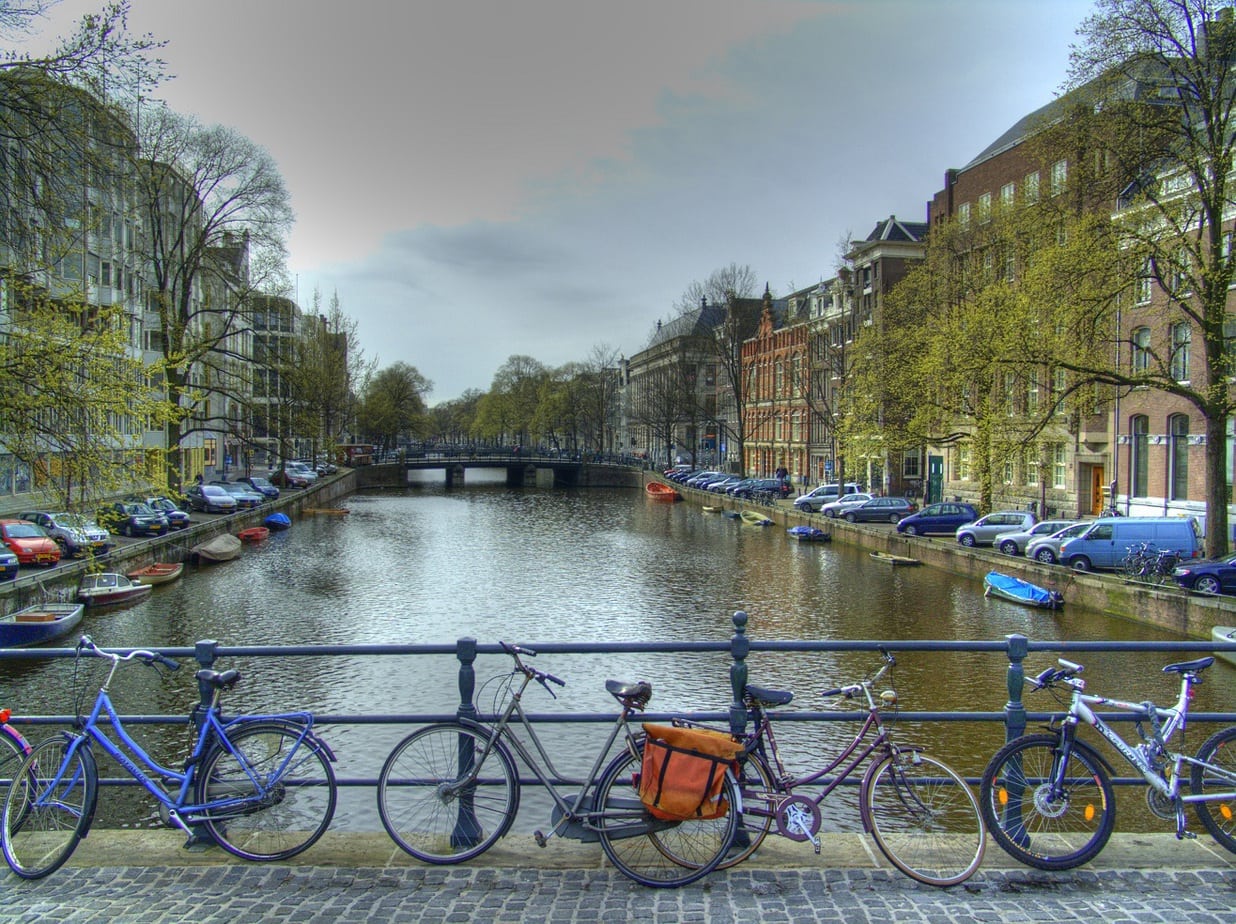 photo source: Wikimedia Commons
photo source: Wikimedia Commons
Singel is the oldest of Amsterdam's master canals and dates back to the xvth century. The canal was originally a moat that surrounded the entire city earlier Amsterdam began to expand beyond the Singel. As the innermost canal in Amsterdam'due south semicircular ring of canals, Singel is very small at merely one mile (1.half-dozen km) long. Although Singel is pretty short, there are about 280 listed/notable buildings along the canal.
Did You lot Know?
There are xi bridges that cross over the Singel, including Torensluis which is the widest span in Amsterdam.
three. K Culvert (Venice)
Years Built: c.12th century – 18th century
Location: Venice, Italy
Length: 2.4 miles (three.8 km)
 photo source: Wikimedia Commons
photo source: Wikimedia Commons
While the entire city of Venice is covered in canals, the Thou Canal is its main waterway and many of the city's other canals feed into the One thousand Canal. It is believed that the Chiliad Canal follows the course of an ancient river and that the surrounding expanse was settled sometime around the ninethursday century. Every bit trade in Venice grew, more permanent structures were built forth the banks of the canal, forming it into the route it takes today. The oldest existing structures forth the Grand Canal date back to 13th century. As Venice's primary canal, the Grand Canal is a popular tourist allure.
Did You Know?
Each twelvemonth on the first Sunday of September, the Historical Regatta takes place on the Grand Canal, which pays tribute to when the Queen of Cyprus Catherine Cornaro arrived in Venice in 1489
2. Naviglio Grande
Years Congenital: 1177 – 1272
Location: Lombardy, Italy
Length: 31 miles (49.nine km)
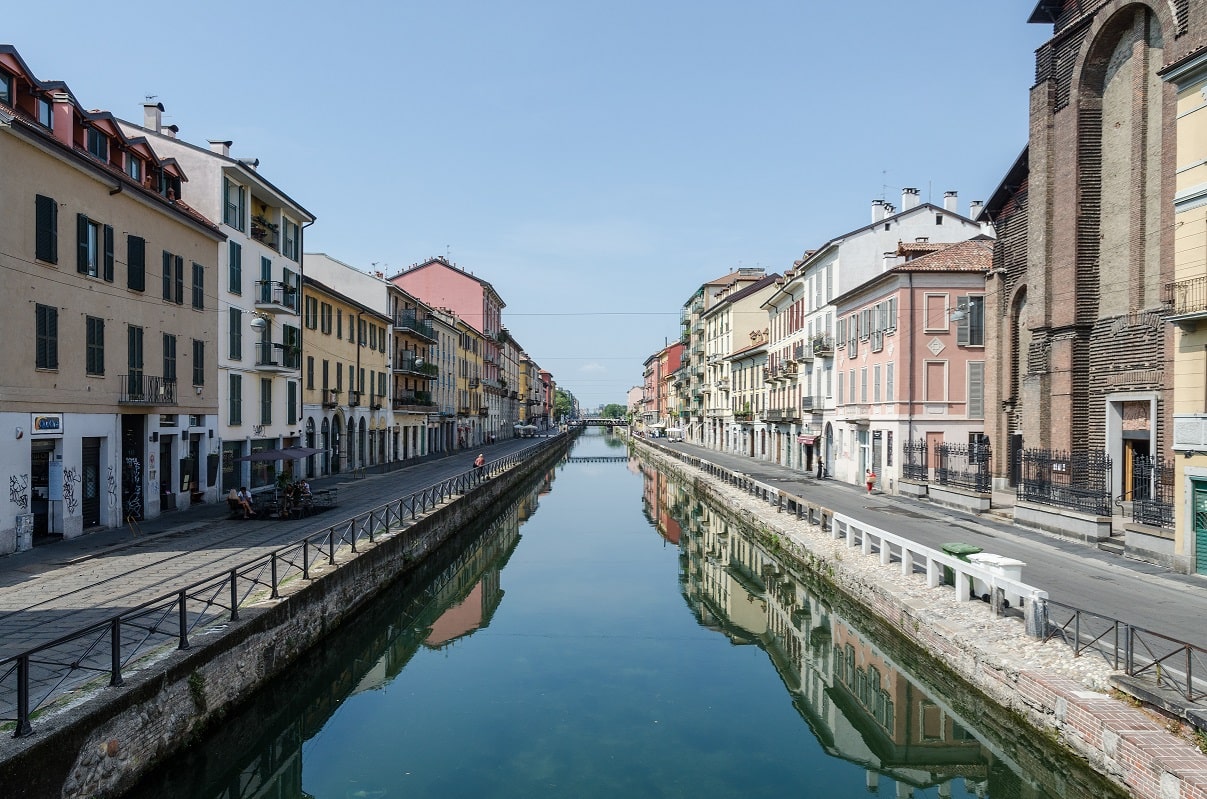 photo source: Wikimedia Commons
photo source: Wikimedia Commons
The Naviglio Grande is the oldest canal in Europe and was in one case the most important culvert in Milan. Construction of Naviglio Grande began in 1177, but there were many setbacks and the canal was not completed until 1272. Initially, the Naviglio Grande was only supposed to be used for irrigation, but pontoons chosen cobbie immediately started transporting appurtenances. In 1979, transportation along the Naviglio Grande was shut downwardly for good and information technology is once more existence used only for irrigation. However, there has been interest in opening the canal back up for transportation in recent years.
Did You Know?
During the belatedly 14th century, the Naviglio Grande was used to transport stone and marble for edifice the famous Duomo (Milan Cathedral).
1. The Grand Culvert (Communist china)
Years Built: 5th century BCE
Location: runs through Beijing, Tianjin, Hebei, Shandong, Jiangsu, Zhejiang, and Hangzhou, Cathay
Length: 1,115 miles (i,794 km)
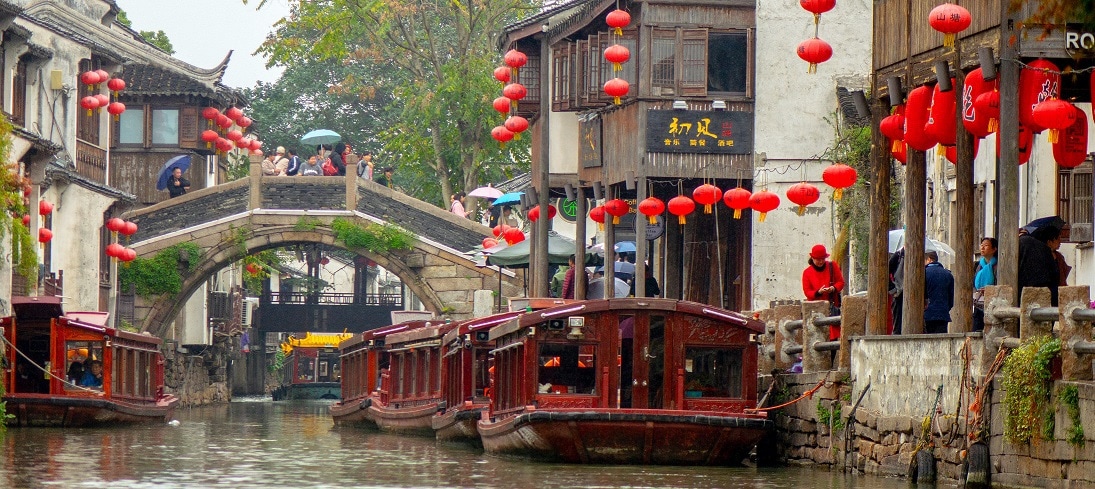 photo source: Wikimedia Eatables
photo source: Wikimedia Eatables
The Thousand Canal in China was commencement built in the 5th century BCE, making it the oldest canal in the world. Piece of work on the M Canal began in 486 BCE after Fuchai, King of the State of Wu, ordered that a canal be built for trading purposes. This role of the Grand Canal is still in employ today even though the culvert has had three major renovations in the Spring and Autumn Period (770 BCE-476 BCE), the Sui Dynasty (581-618) and the Yuan Dynasty (1271-1368). The Grand Culvert has also been updated in more contempo years every bit well. In addition to existence the oldest canal, the Grand Culvert is as well the world's longest culvert, spanning 1,115 miles (ane,794 kilometers).
Did You Know?
In the past when the Chiliad Canal served as the primary transportation route betwixt northern and southern China, more than than 8,000 boats transported 4 to six one thousand thousand dan (240,000–360,000 metric tons) of grain each yr.
paigequincluddeas.blogspot.com
Source: https://www.oldest.org/structures/canals/
0 Response to "Ancient Canals the Old Is New Again"
Post a Comment